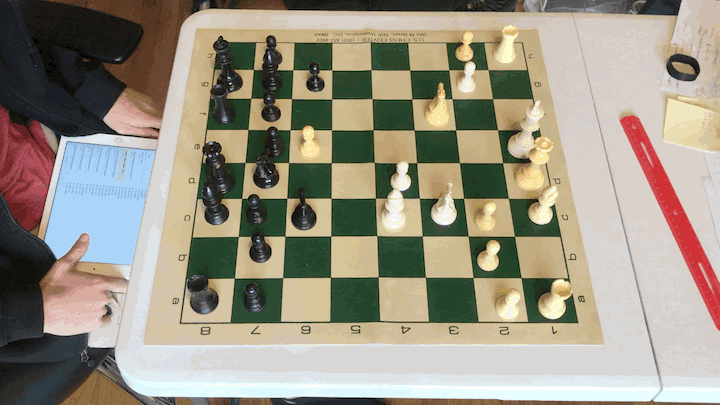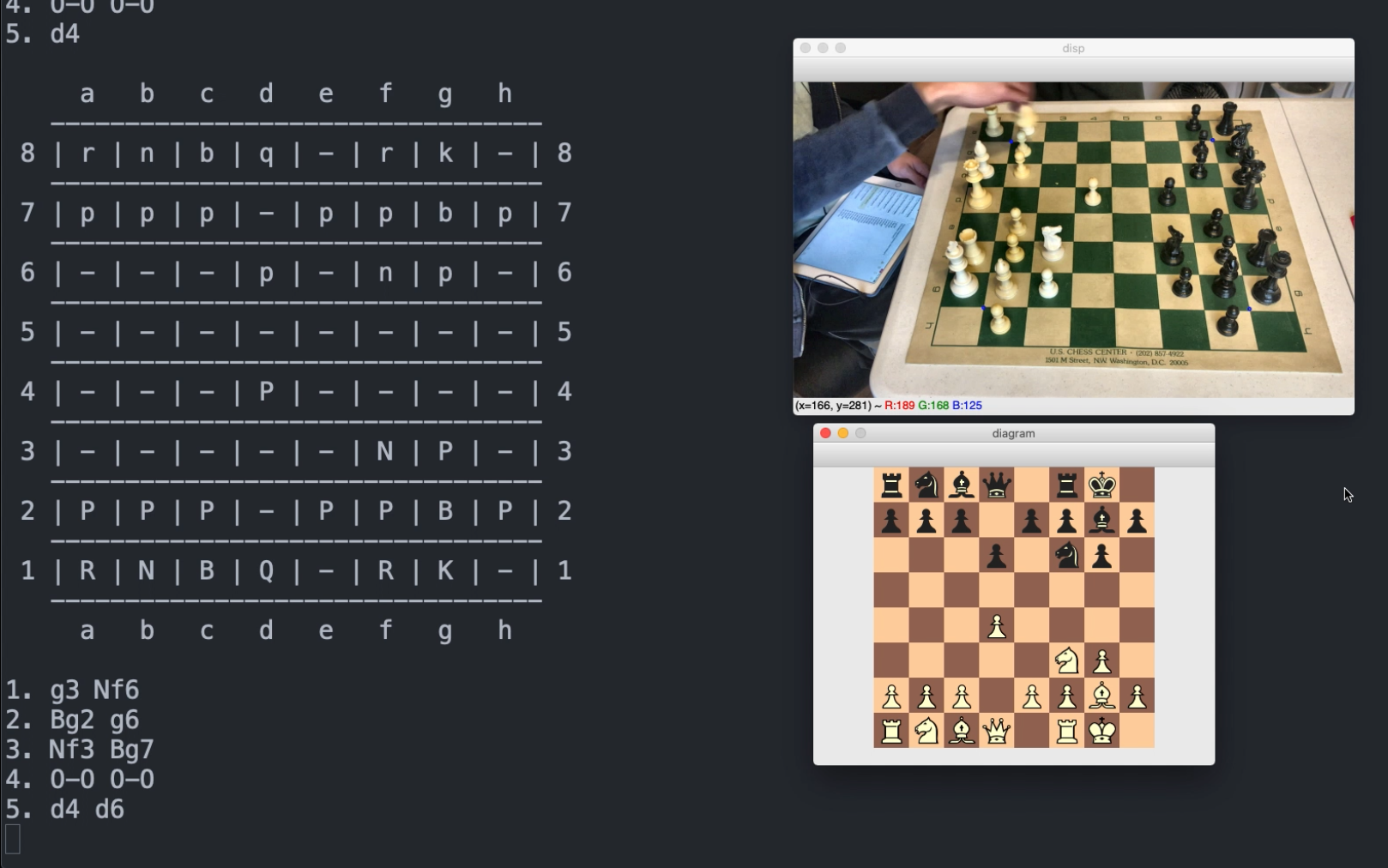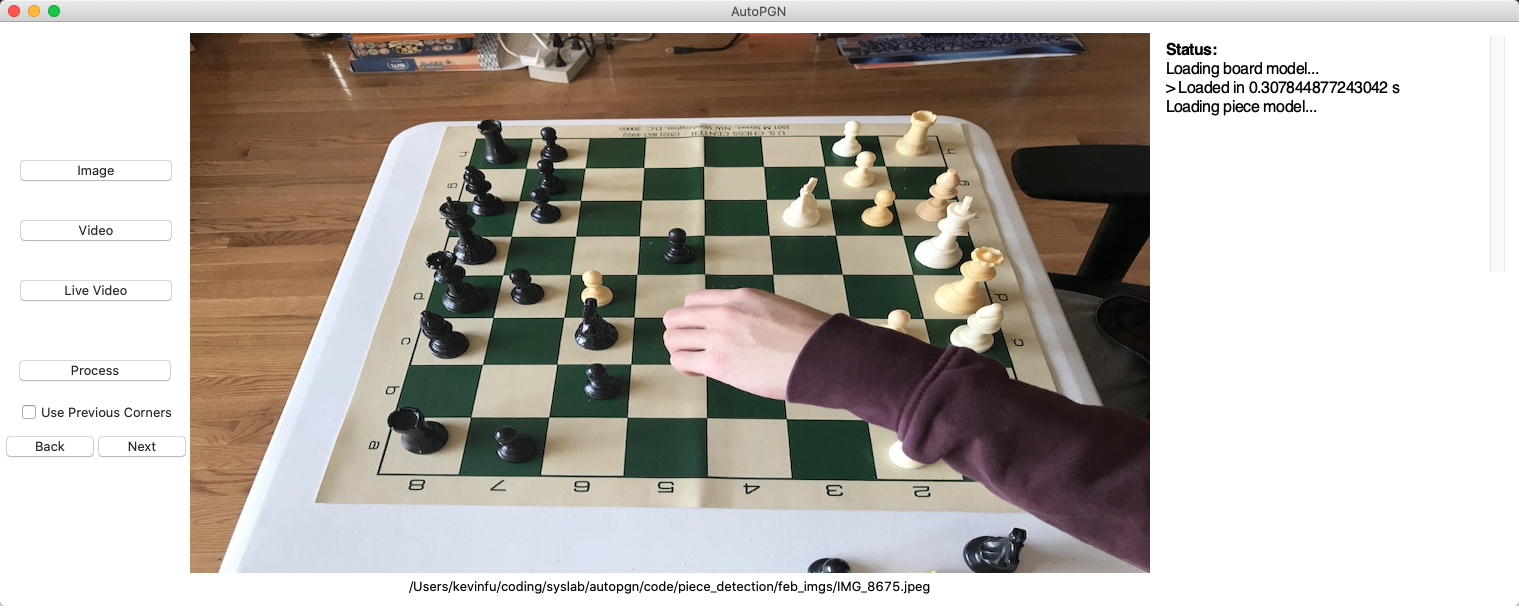AutoPGN is an automatic chess-move transcriber. It notates the moves played in a prerecorded chess game, in real-time, using computer vision and machine learning, then outputs a PGN file that can be copy-pasted into other chess software. It also updates a graphical representation of the board as it runs.
Paper: https://drive.google.com/file/d/12eamkGZ2owfkUtRWU2UreRRwwqyMmgmF/view?usp=sharing
Live Demo: https://youtu.be/WzbYgsyceso
AutoPGN is written in Python 3. To run the main methods (listed under "Running AutoPGN"), install the following packages:
- NumPy 1.17+
- OpenCV 4.1+ (Homebrew installation recommended for Mac users)
- scikit-learn 0.20+
- Matplotlib 3.0+
- TensorFlow 2.0+
- tkinter 8.5+ (often pre-installed with Python)
For automatic model downloading, install:
- gsutil 4.48+
Some of the scripts in this repo are not vital to the main method (e.g. model training scripts, data collection utilities). To run every script in this repo, install these additional packages:
- Jupyter 4.4+
After installing the desired dependencies, clone this repo, and cd into code/. Then, to download the necessary Keras models to models/ automatically, run:
chmod +x download_models.sh
./download_models.sh
Alternatively, manually install the necessary models by clicking the links below to download, then moving the downloaded files into code/models/. Do not change any filenames.
Optional: Download the lattice point dataset here and the piece classification dataset here.
There are a few ways to run AutoPGN. For the full video-to-PGN system, as shown in the live demo, use board_detection/video_handler.py. Output PGN files will be saved to board_detection/ and match filenames with the input video. From this repo, enter:
cd code/board_detection/
python video_handler.py src_video|phone_ip [show process] [save dir]
For a GUI-based version with no move transcription, use user_interface/ui.py. Intermediate debug images are saved to user_interface/assets/. Run the following:
cd code/user_interface/
python ui.py
To play around with the system, use piece_detection/main_shell.py. This script is the least polished, but allows the user to add OpenCV imshow statements, unlike the previous two options.
cd code/piece_detection/
python main_shell.py phone_ip models_dir input_img_path
code/
├── assets/
├── board_detection/
└── video_handler.py
├── chess_logic/
├── download_models.sh
├── models/
├── piece_detection/
└── user_interface/assets/
- Input images for the GUI in
user_interface/
board_detection/
- Hough transform-based board detection
- Board segmentation code
- Lattice point CNN train script
board_detection/video_handler.py
- Main method: takes video of chess game as input, outputs .pgn file
- To save calm frames & board corners, fill optional
save_dir/arg (for data collection) - Usage:
python video_handler.py src_video|phone_ip [show process] [save dir]
chess_logic/
- PGN move transcription engine
- Sample I/O .pgn files
download_models.sh
- Script to download lattice point CNN and piece detection CNN to
models/from GCloud - Requires installation of gsutil
models/
- Directory to house model files
piece_detection/
- Piece detection CNN train scripts
- Data augmentation utility scripts
- Data collection utils
- Command-line video handler
user_interface/
- GUI (output debug images saved to
user_interface/assets) - Query script for graphical chessboard representation
- Deprecated wifi-camera based input scripts (requires installation of IPCamera on iPhone)


